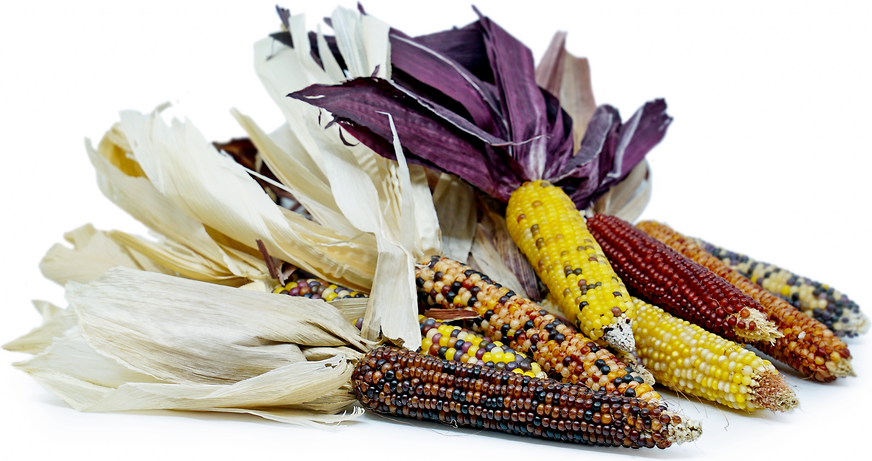


Ornamental Corn Mini
Estimated Inventory, 24 ct : 0
Description/Taste
Mini Ornamental Corn is small in size, averaging ten centimeters in length, and is oblong and cylindrical in shape. The cob is encased in a papery, multi-layered, semi-rough husk that can range in color from ivory to purple. When peeled and dried, the husks become stiff and can retain its shape for decorations. Inside the husk, the kernels have a hard outer surface, a soft endosperm or center, and when dried the kernels remain smooth and do not wrinkle. The kernels also range in color from white, gold, red, orange, brown, to blue. Mini Ornamental Corn is not typically consumed, but specific varieties may be popped and have a mild, starchy flavor.
Seasons/Availability
Mini Ornamental Corn is available in the late summer through fall.
Current Facts
Mini Ornamental Corn is classified as a grass that is a part of the species Zea mays. There are many varieties of Mini Ornamental Corn including Little Indian, Little Boy Blue, Little Miss Muffet, Cutie Pink, Robust Ruby Red, Little Bell Ornamental, Indian Fingers, and Wampum. Mini Ornamental Corn is used as decoration for fall table displays and arrangements with squash, gourds, leaves, and baskets.
Nutritional Value
Mini Ornamental Corn is high in starch allowing it to remain smooth and unwrinkled when dried. The hard, outer shell also allows for the corn to have a long shelf life.
Applications
Mini Ornamental Corn is not typically consumed, but some varieties can be popped like traditional popcorn or ground down to make cornmeal. Mini Ornamental Corn is mainly used as a fall decoration. They can be mixed with ornamental gourds, bundles of hay, or miniature pumpkins for a blend of seasonal items and can be used on the front porch or as a table display. They can also be used as a name place card on plates for fall dinner parties.
Ethnic/Cultural Info
Native Americans grew many different varieties of ornamental corn and believed that each color and variety had a unique significance. They also grew ornamental corn because of its long storage capabilities and ability to be food that would survive during harsh winters. Corn would often be made into hominy, which are kernels soaked in a lime or lye solution in a process known as nixtamalization. After the soaking is complete, the kernels are dried and can be ground into a flour to make tortillas or grits and act as a thickener in stews, soups, and casseroles.
Geography/History
Native to the Americas, corn did not grow wild and was first domesticated by Native Americans from teosinte, which is a wild Mexican grass. Mini Ornamental Corn then made its way to Europe via explorers and traders and was spread across the world. Today Mini Ornamental Corn is grown in home gardens and is also found at specialty grocers and farmers markets in the Americas, Africa, Asia, Europe, and Australia.




